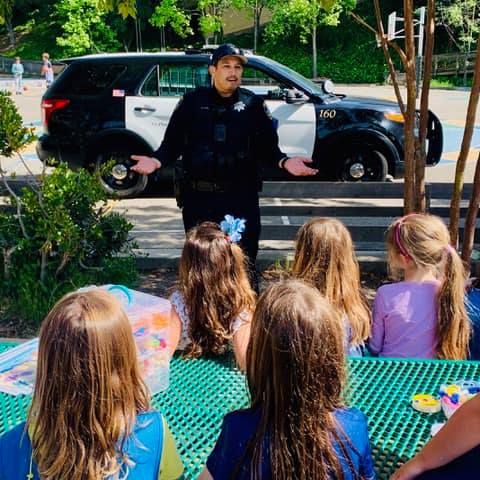During a discussion leading up to approval of accepting a $410,000 state grant to help pay for a Piedmont police “juvenile officer,” council members said they would like to one day see stats or other research showing the specific benefits traceable to that officer’s work.
Mayor Jen Cavenaugh told police Chief Jeremy Bowers she would like to see data showing what that position, now held by Officer Hugo Diaz, has and hasn’t been accomplishing.
Bowers said extracting that precise data has proven problematic. But he asserted the work of Diaz, and Officer Nicole Casalnuovo before him, has provided continuity and consistency in addressing various school-related issues. That continuity, he said, helps build trust, which is vital.
“A lot of the issues we deal with in the schools are very delicate, and it requires a nuanced approach,” Bowers told the council.
Diaz told the council his work with the schools “is more about prolonged interaction than about the here and now.”
The juvenile officer position was created in mid-2019, after much community discussion about that position’s description and role. The idea of a school resource officer whose beat would have been the district’s middle and high school campuses ran into resistence; some students, parents and school officials said a uniformed, armed officer at schools could be viewed as threatening, and could increase concerns about criminalization of school disciplinary issues and possible targeting of minority students. Ultimately, the new position was “juvenile officer,” whose mission is more narrowly focused on helping fight tobacco use, drug use, and vaping by local school students. Casalnuovo filled that position until late 2021, when Diaz moved into that role.
Bowers did have numbers showing that in 2022, 311 calls for service came from Piedmont High School, Millennium High School, and Piedmont Middle School combined.
Of that $410,000 grant amount, $12,249 is being set aside for “vape sensor” equipment for installation in Piedmont schools. Such sensors already in Piedmont schools have alerted school officials to hundreds of incidents of vaping by students, serving as an indicator of the prevalence of vaping.
“What happens down the line from there in terms of interventions is up for debate,” Bowers said.
Piedmont Finance Director Michael Szczech told the council that funding for the juvenile officer’s position has been baked into the city’s general fund budget, and that the grant money is essentially “gravy on top.”
Striping projects, including a bike lane
By a 5-0 vote, the council approved a contract award of $71,655 to the Chrisp Co., based in Fremont, for a street striping project, and an $89,332 overall project budget.
The lane work will include adding a new “Class 2” bike lane on Moraga Avenue in the uphill direction from Red Rock Road to the easterly city limits. A Class 2 bike line is legally defined as “a designated lane of a street, restricted to bicycle usage and separated from motor vehicles by a painted line, raised divider or curb.”
That work, City Engineer John Wenger told the council, will include making the traffic lane from one foot to two feet narrower, in part “to narrow the perception” of where motorists can drive, to encourage more careful driving.
Other work included in the Chrisp contract is edge striping on Moraga Avenue from Bonita Avenue to Red Rock Road, pedestrian safety striping at the intersection of Moraga and Mesa Avenues, improved “centerline delineation” on La Salle Avenue from Hampton Avenue through the “S” curve to the east, and improved striping at Lincoln and Sheridan avenues.
The bicycle lane improvements on Moraga Avenue are in compliance with the Piedmont Safer Streets Plan and the remainder of the improvements are responses to various concerns that have been raised by the public and reviewed by the city’s Traffic Committee to improve safety.
All three of these projects, Public Works Director Daniel Gonzales said, were developed from residents’ concerns — speeding motorists on Moraga Avenue have been a concern for several years and have recently caused a number of accidents, a city report notes, and concerns about speeding downhill traffic in the La Salle Avenue neighborhood have also been reported. Additionally, residents near the intersection of Moraga and Mesa Avenues have expressed concerns about pedestrian safety.
The plan is for the work to begin in March, with expected completion in April.
Stormwater pollution prevention
In another 5-0 vote, the council approved a contract of almost $175,000 to Kimley-Horn and Associates, Inc., a nationwide company, for services related to the city’s Clean Water Program, and to the city’s work to comply with requirements of the Municipal Regional Permit, which requires Bay Area cities to minimize stormwater pollution entering storm sewer systems and, by extension, downstream waters.
Kimley-Horn has been a consultant for the city on these efforts since 2020.
Contact Sam Richards at sam.richards4344@gmail.com
